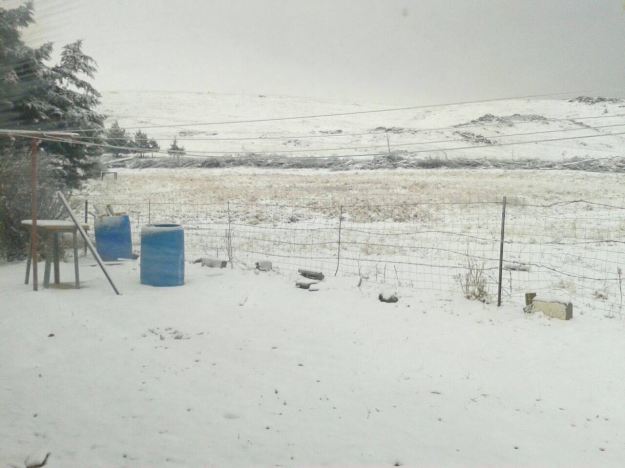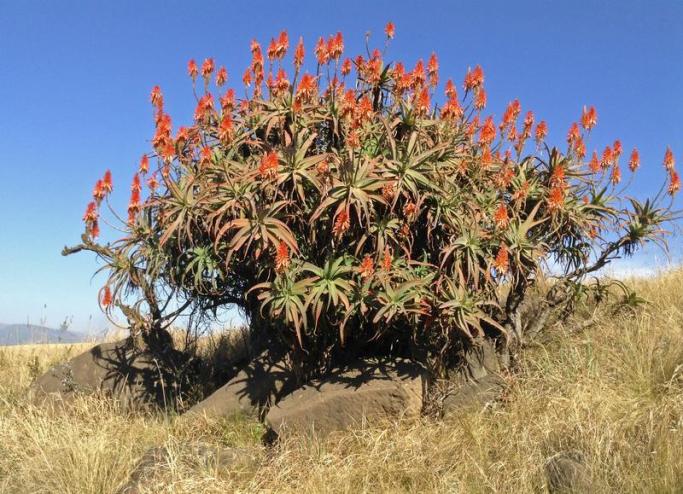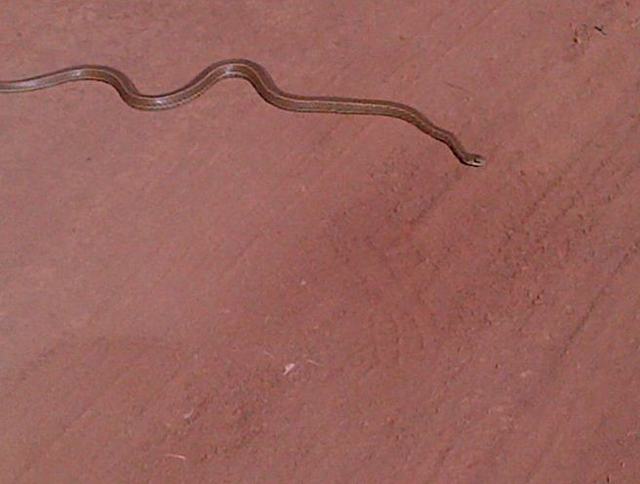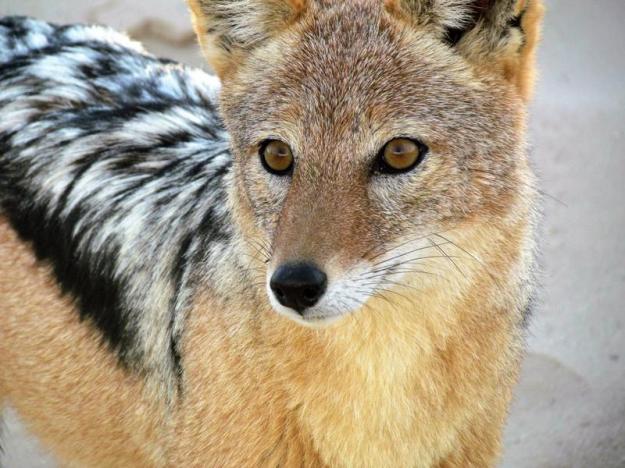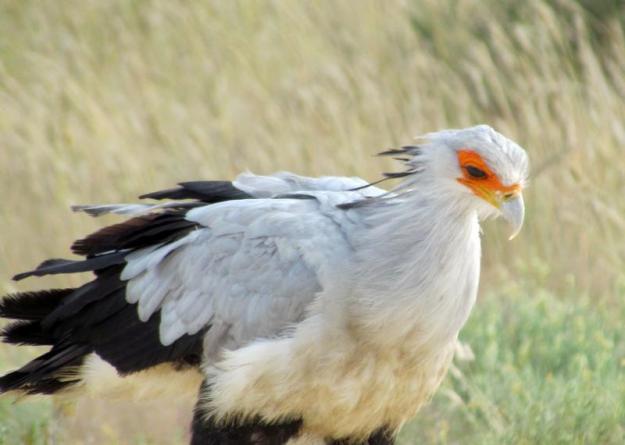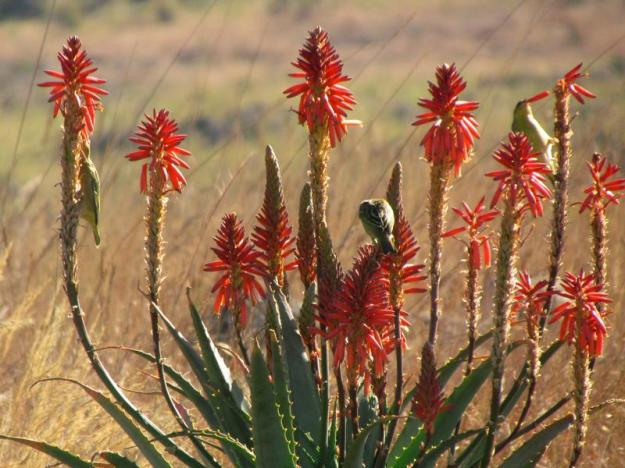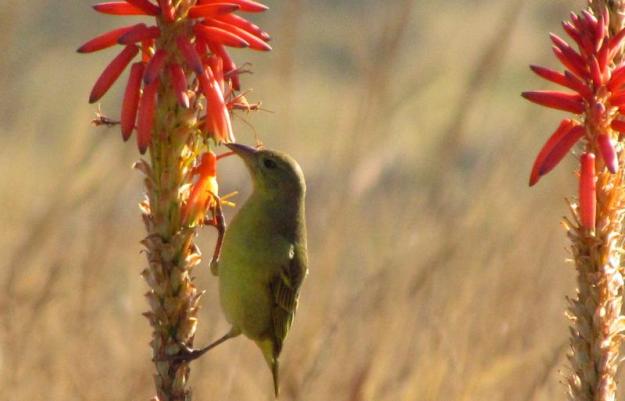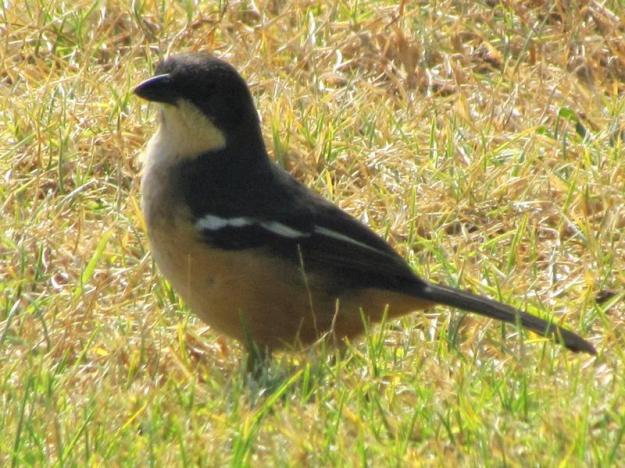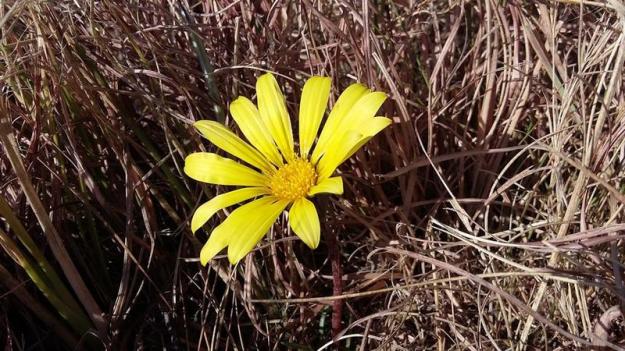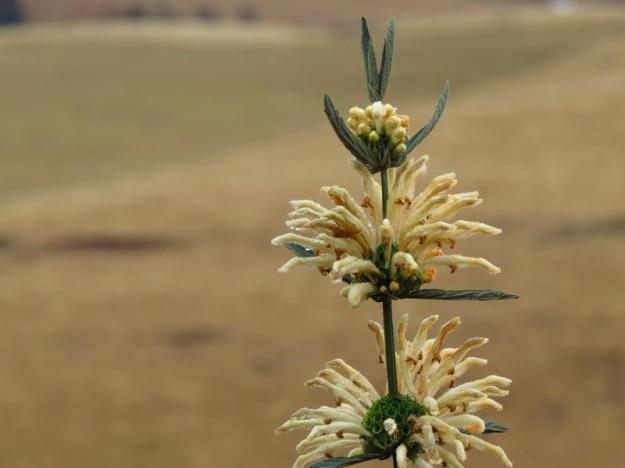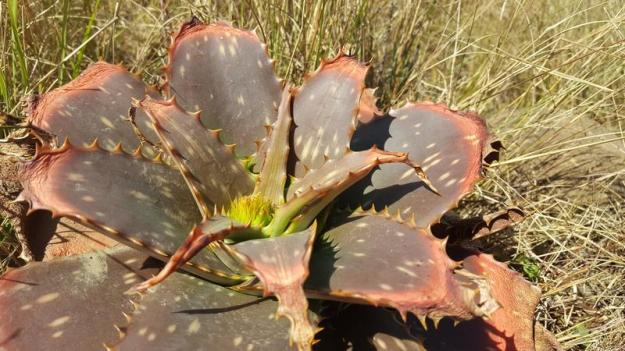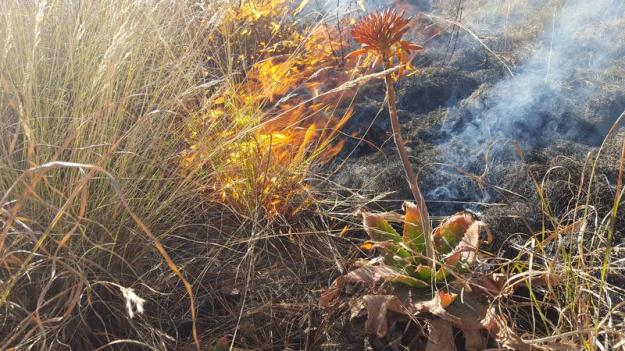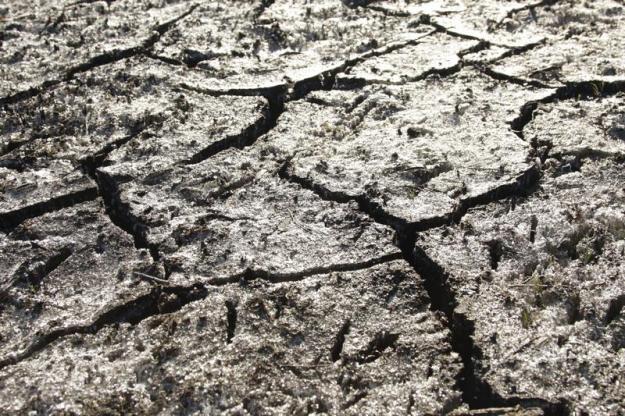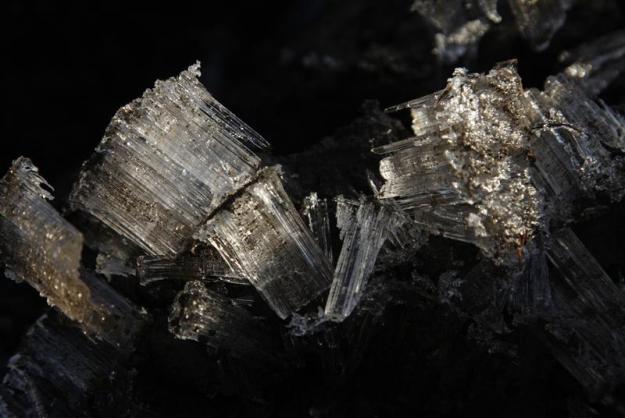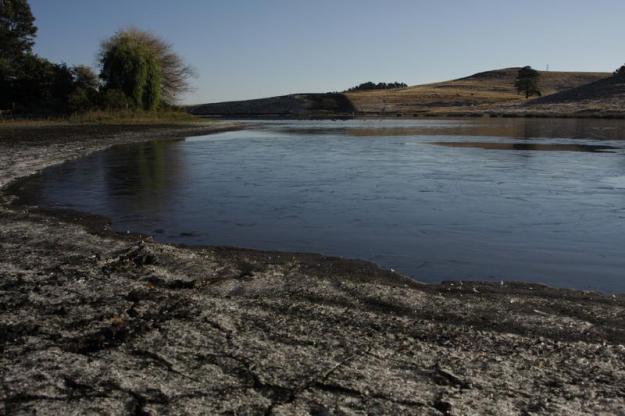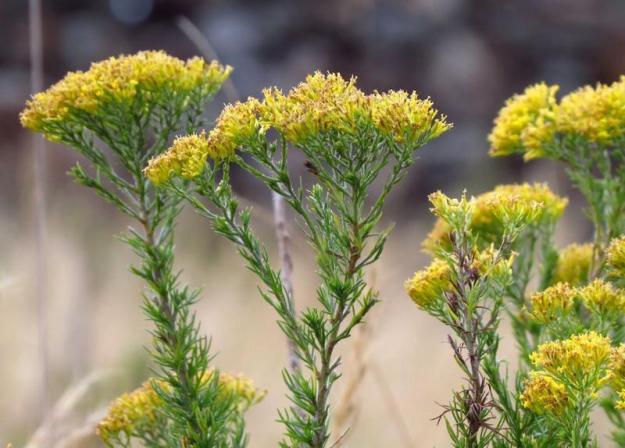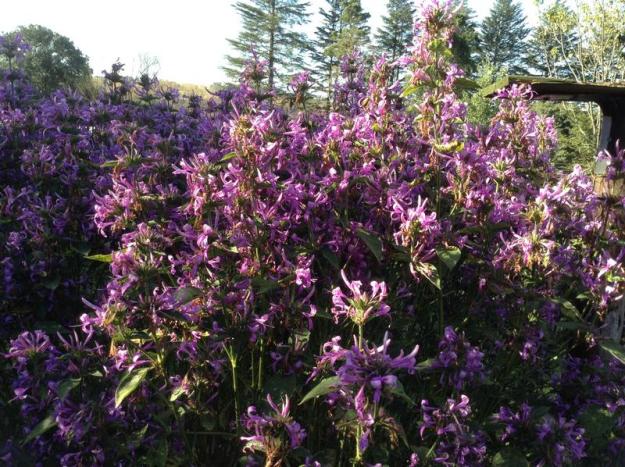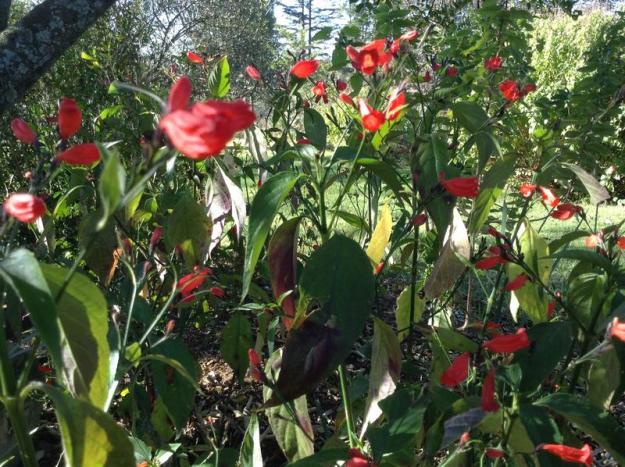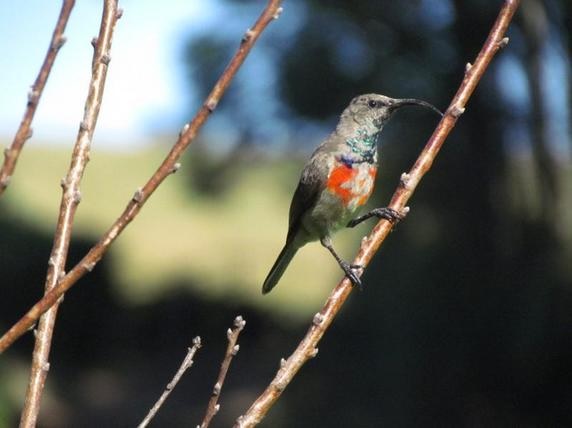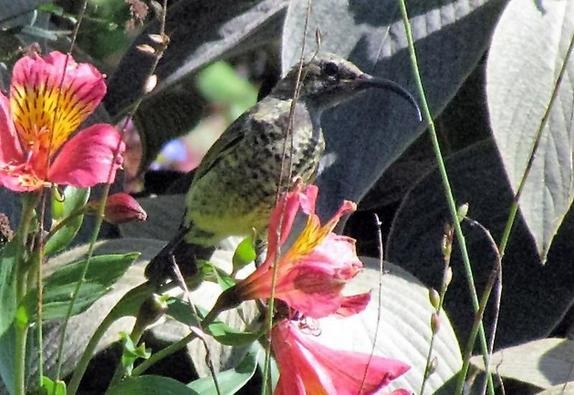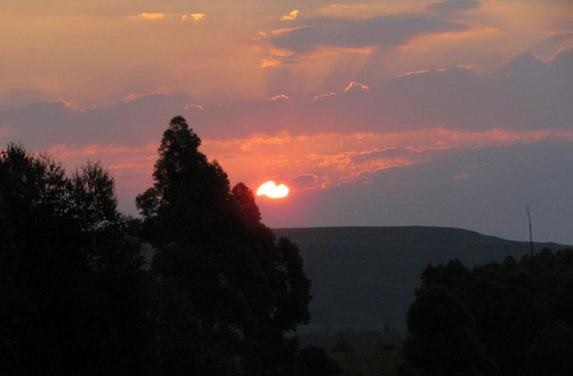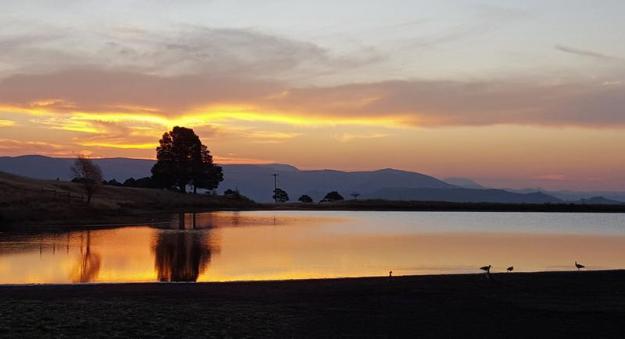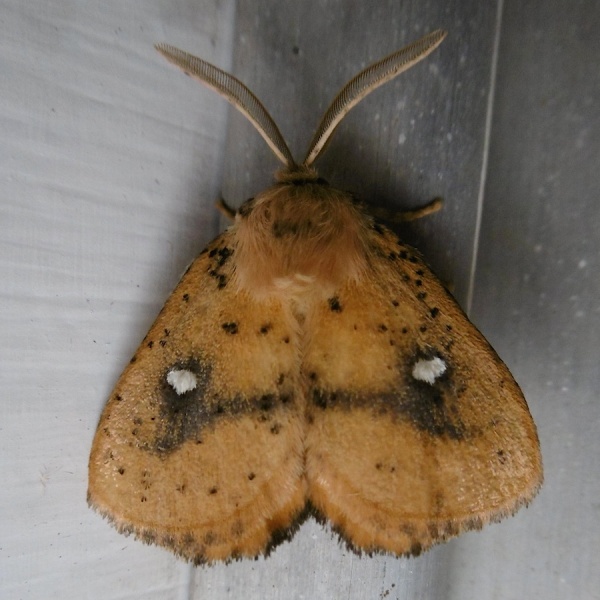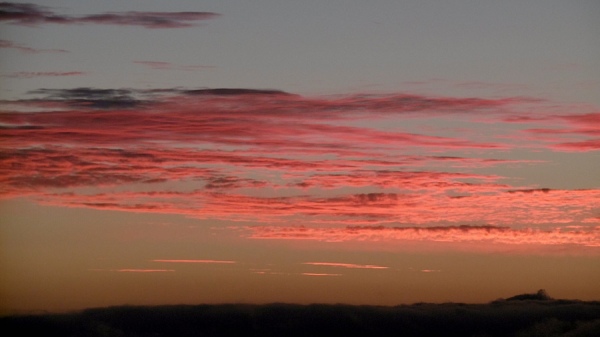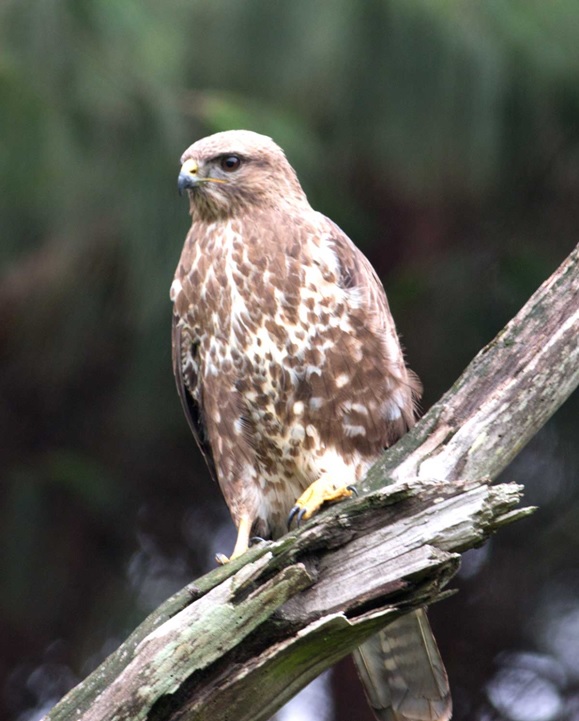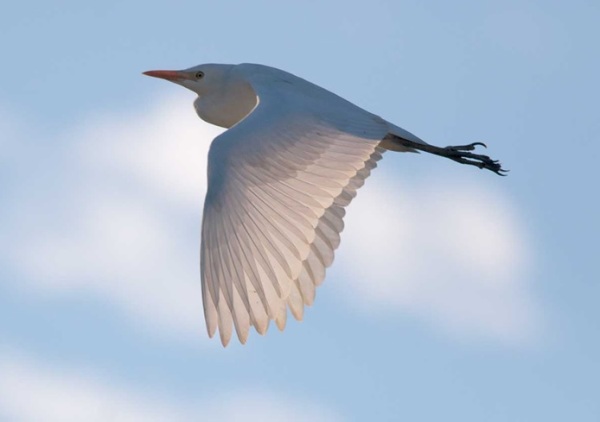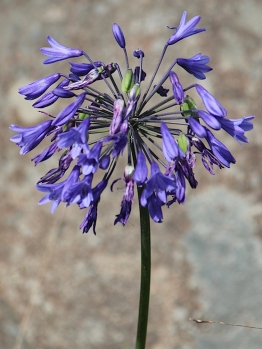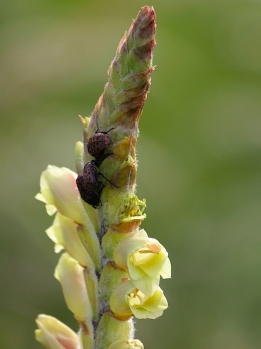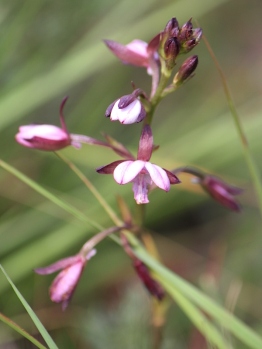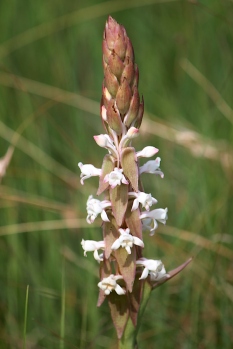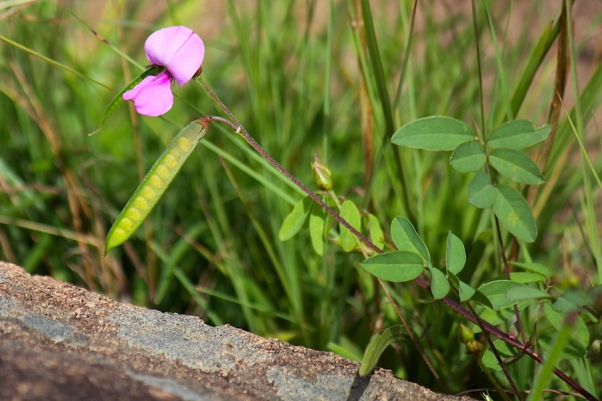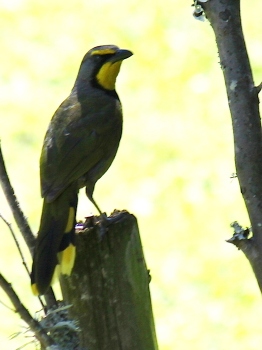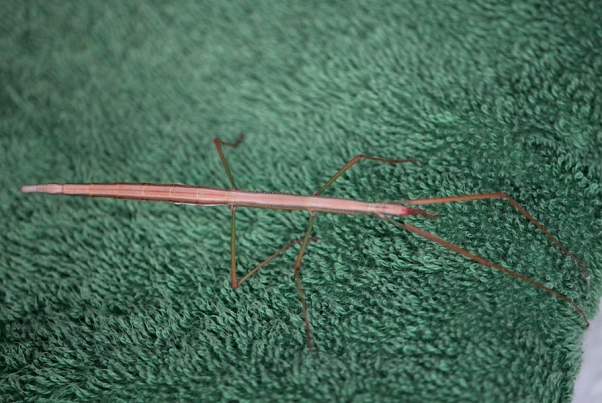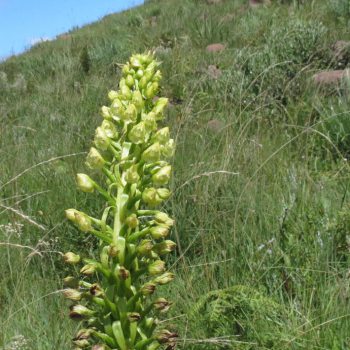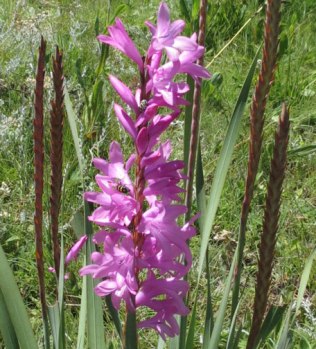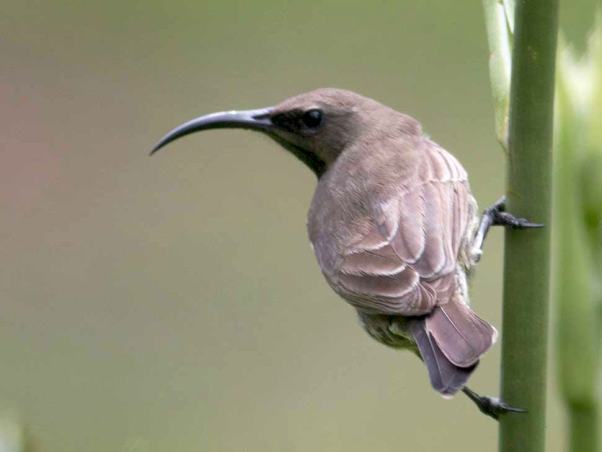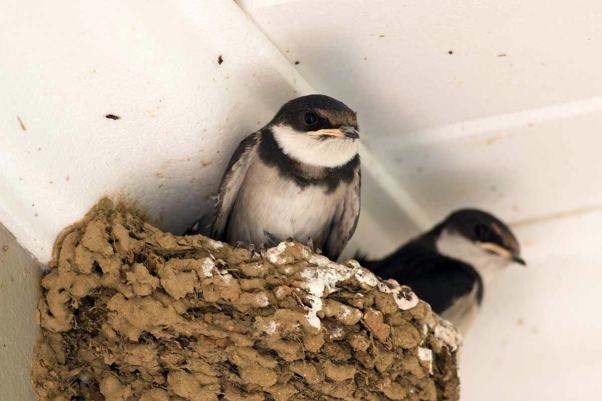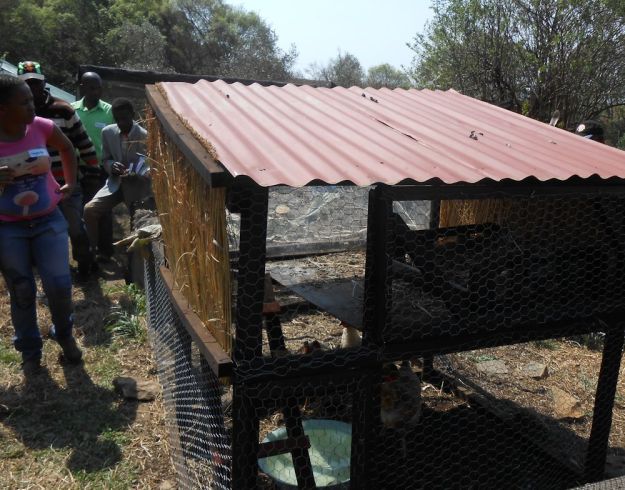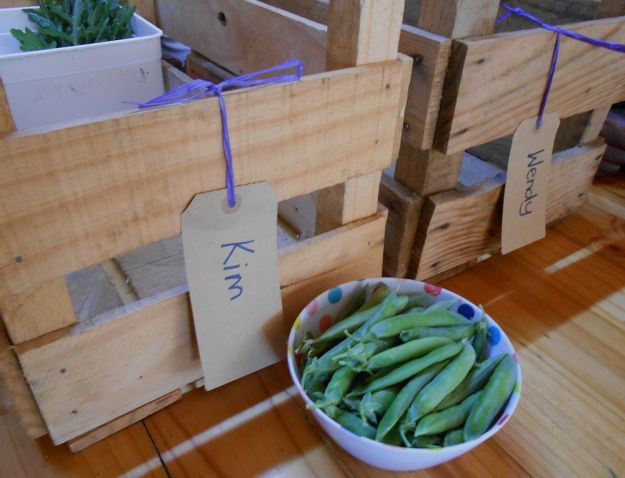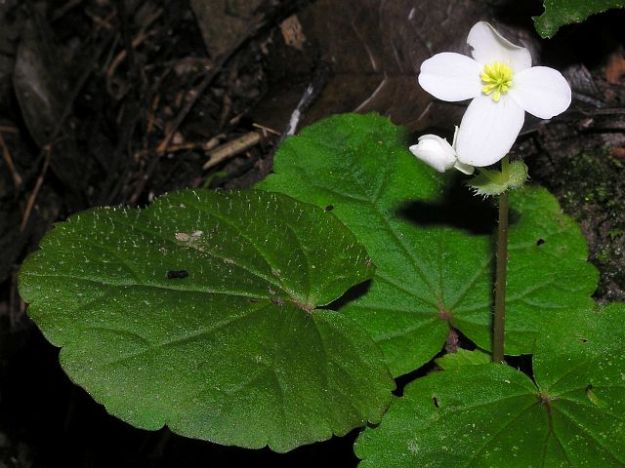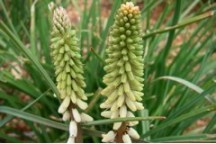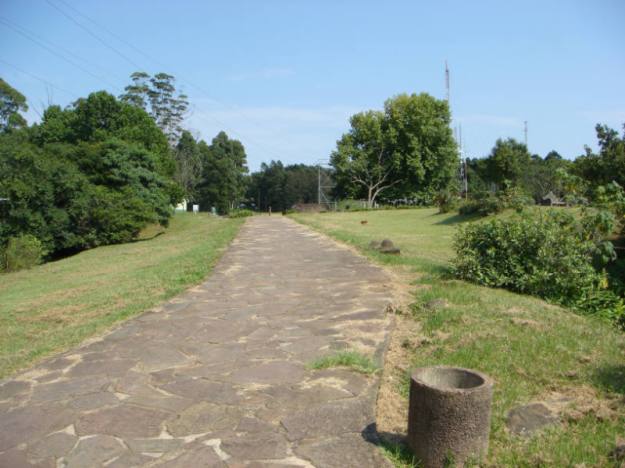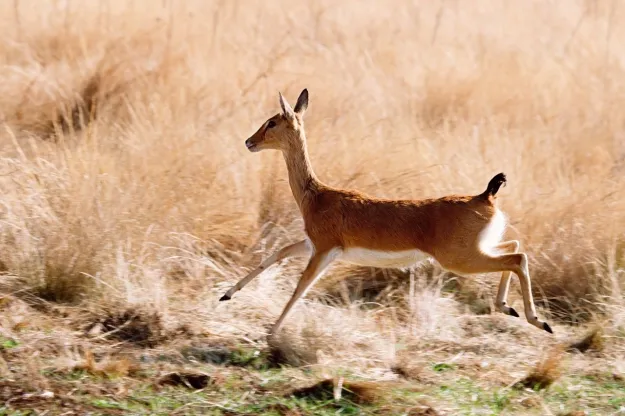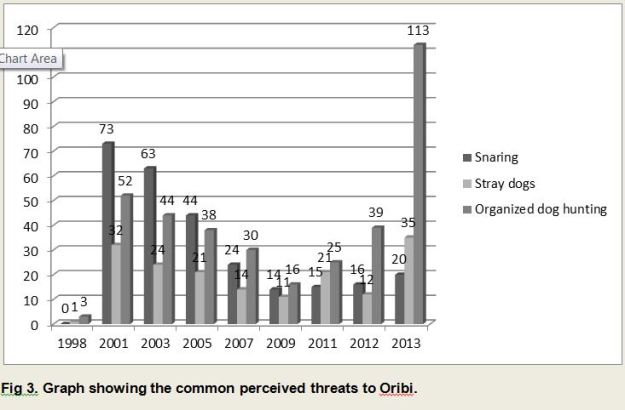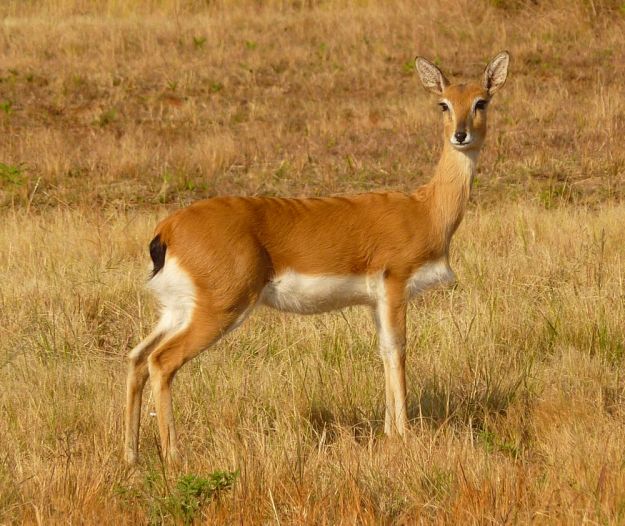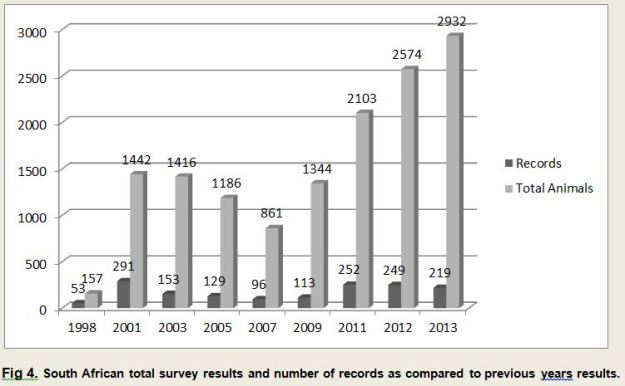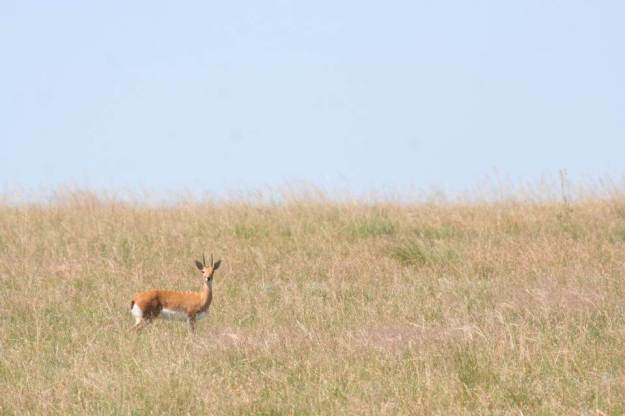Caroline McKerrow of Stormy Hill
We saw quite a bit at Stormy Hill this August. The Bushbuck pair were visiting, as well as the Reedbuck. The resident Duiker is wandering around.
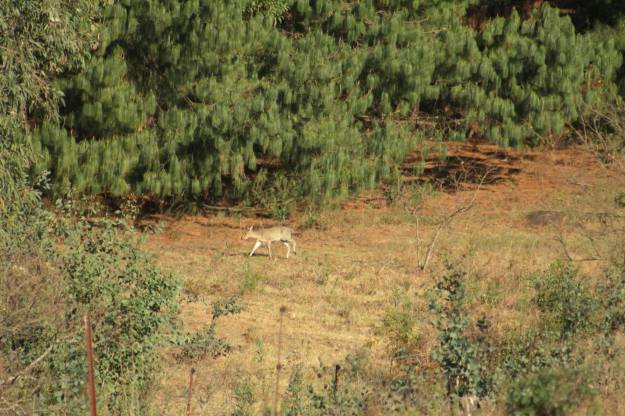
Resident Duiker wandering around
A vlei rat was helping itself to some horse food leavings at the stables.
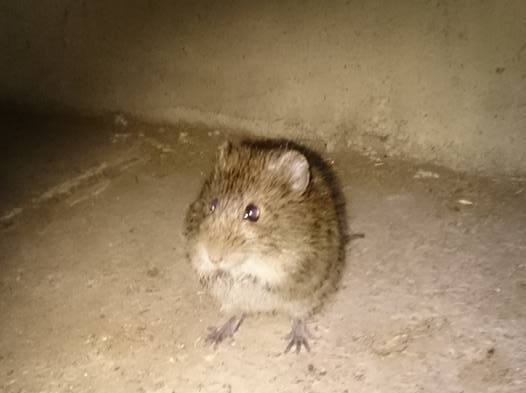
Vlei rat
The Village Weavers and the Hadedas are building nests in the bird tree.
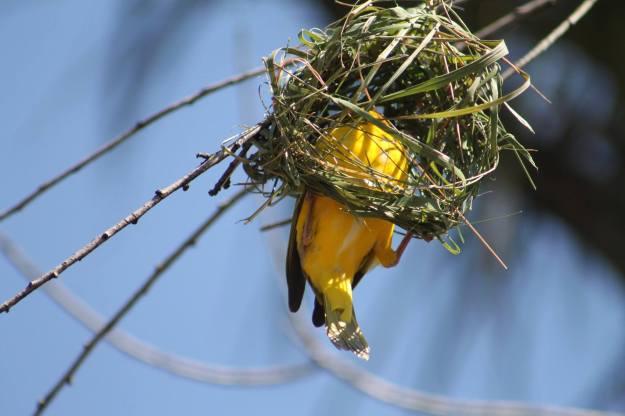
Village Weaver working hard on his nest to impress the female.
We went on a ride and saw a huge bird at the dam which we think was a lammergeier (it’s the only bird that fits the sighting in our bird book.) I’ve also included some photos of our resident Jackal Buzzards.
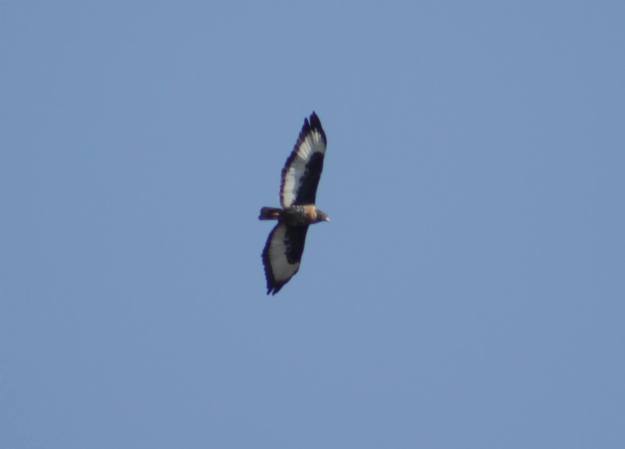
Jackal Buzzard
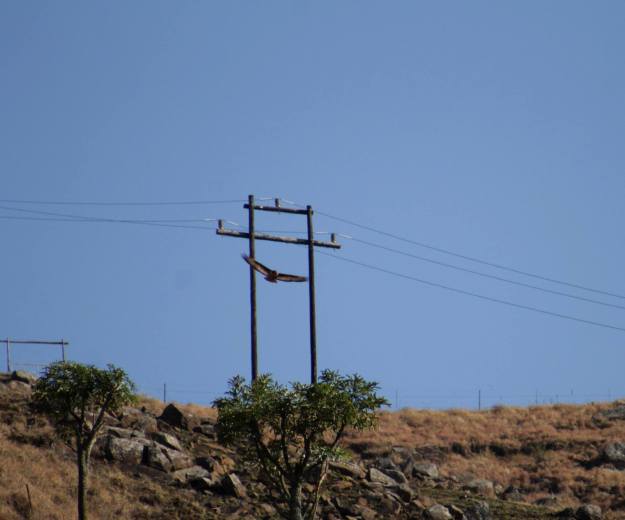
Jackal Buzzard
Crystelle Wilson of Gramarye
There is concern about the status of Secretarybirds in South Africa, which has been uplisted from Near-threatened to Vulnerable. This is due to factors such as habitat loss and collisions with fences and power lines. BirdLife South Africa has a special research project on these birds which can be followed at https://www.facebook.com/secretarybirdconservation. It is always a highlight to spot them in the field, and especially in an agricultural setting where they appear to adapt to their surroundings.
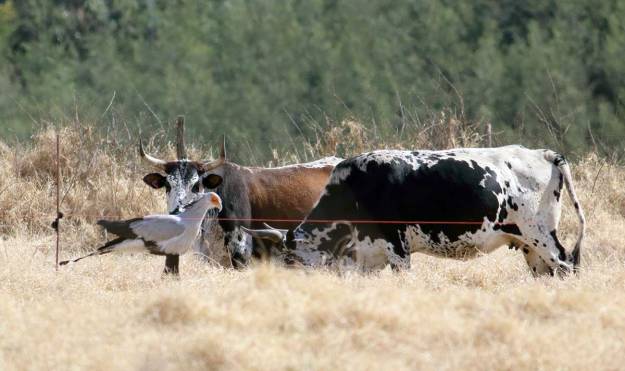
Secretarybird
Equally pleasing was catching sight of a Wattled Crane, a long distance away from the camera.
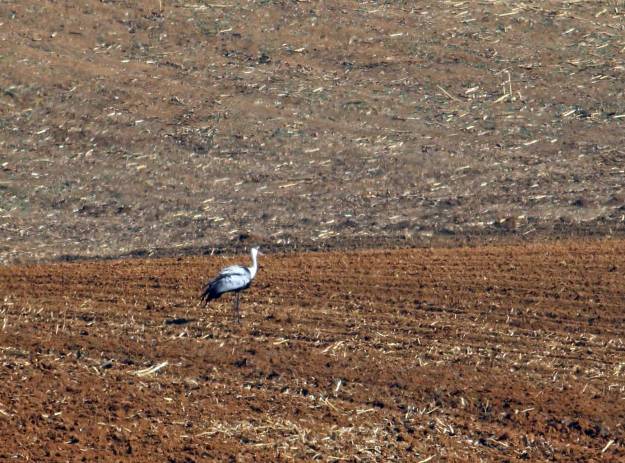
Wattled Crane
The atlas list for the Elandshoek pentad 2935_3000 included: Cape Glossy Starling, Fan-tailed Widowbird, Natal Spurfowl, Levaillant’s Cisticola, Red-necked Spurfowl, Spur-winged Goose, African Firefinch, Cape Wagtail,
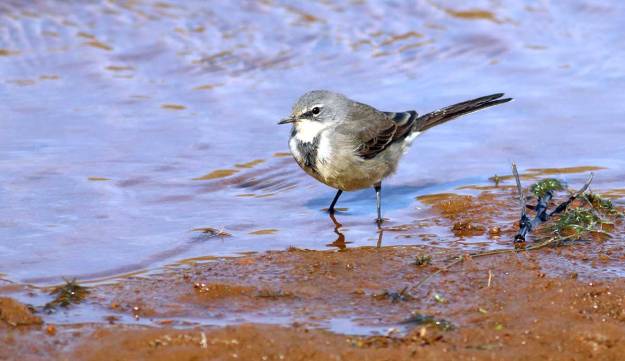
Cape Wagtail
Black-headed Oriole, Southern Boubou, African Wattled Lapwing, African Spoonbill, Grey Crowned Crane, Southern Grey-headed Sparrow, Cape Sparrow, Cape Longclaw,
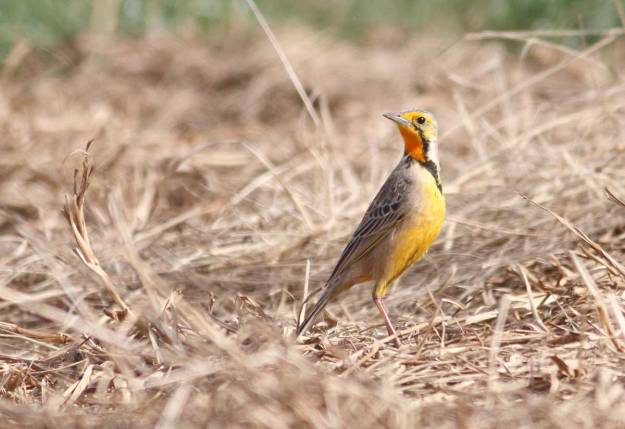
Cape Longclaw
Olive Thrush, Red-billed Teal, African Darter, Reed Cormorant, Common Moorhen, Southern Red Bishop, Red-capped Lark, Dark-capped Bulbul, Cape Robin-Chat, Three-banded Plover,
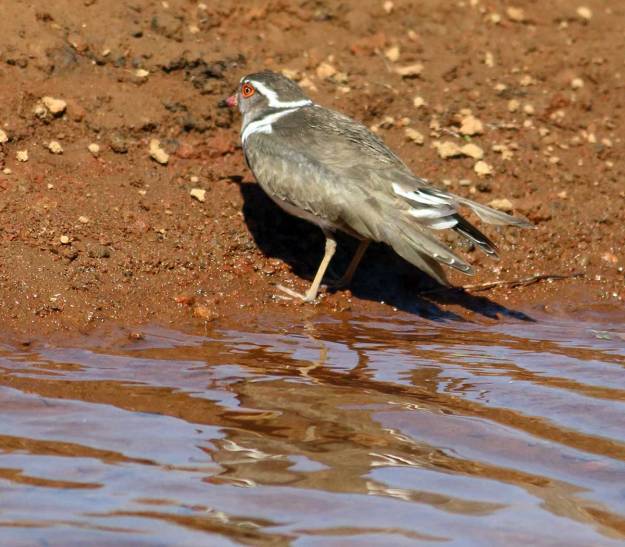
Three-banded Plover
Cape Crow, Cape Turtle-Dove, Jackal Buzzard, House Sparrow, Red-billed Quelea, African Stonechat, Pied Starling, Cape Weaver, Drakensberg Prinia, Brown-throated Martin, Long-crested Eagle,
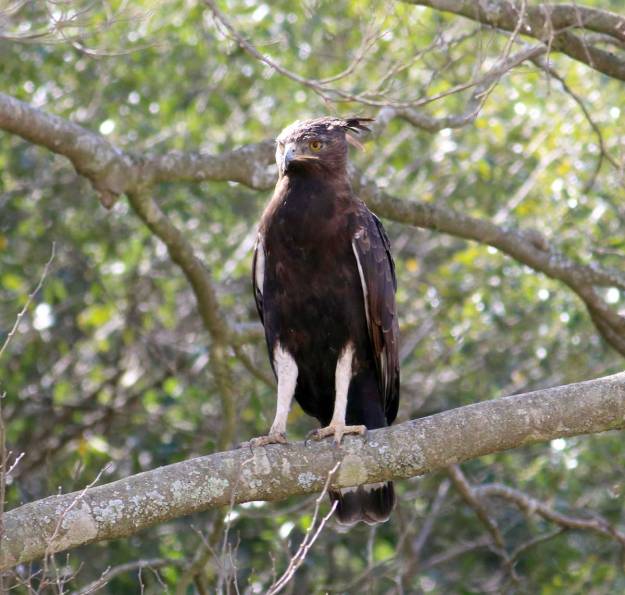
Long-crested Eagle
White-breasted Cormorant, Egyptian Goose, South African Shelduck (the male has a grey head and females black and white)
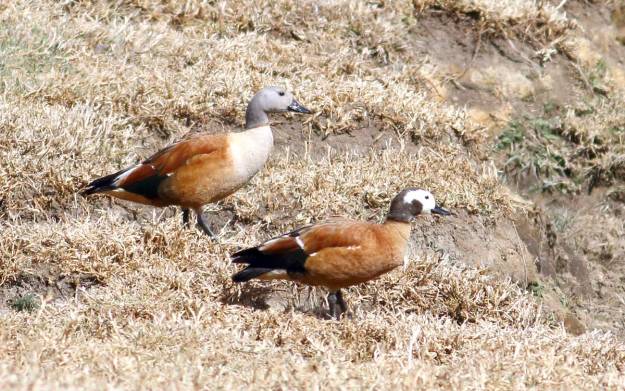
South African Shelduck
African Sacred Ibis, Red-knobbed Coot, Little Grebe, Yellow-billed Duck,
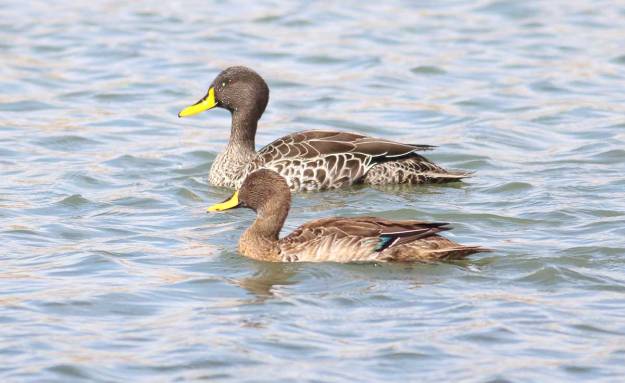
Yellow-billed Duck
Buff-streaked Chat,
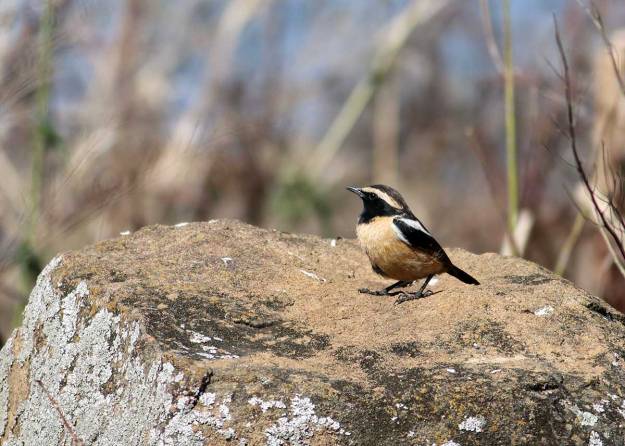
Buff-streaked Chat (male)
Bokmakierie, Hadeda Ibis, Black-headed Heron, Wattled Crane, Village Weaver, Red-eyed Dove, Common Fiscal, Cape White-eye, Fork-tailed Drongo, Southern Double-collared Sunbird, Speckled Mousebird,
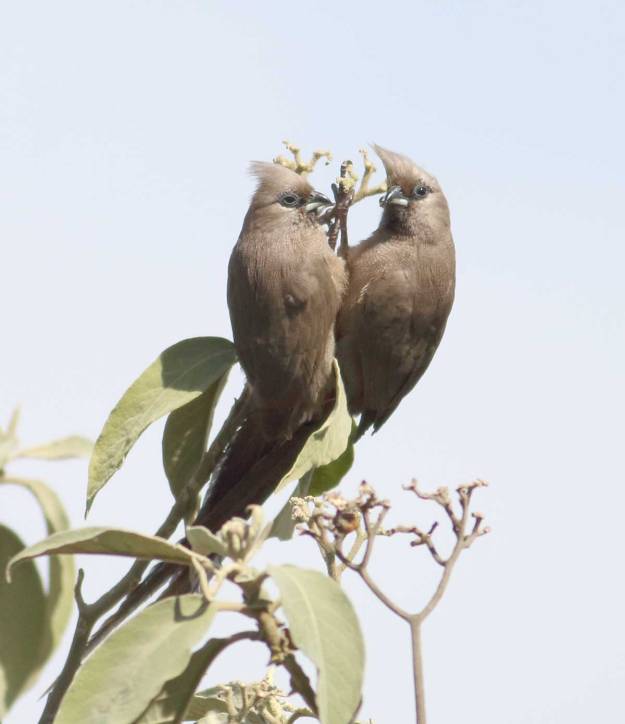
Speckled Mousbirds
Sombre Greenbul, Amethyst Sunbird, Hamerkop, Secretarybird, Malachite Kingfisher
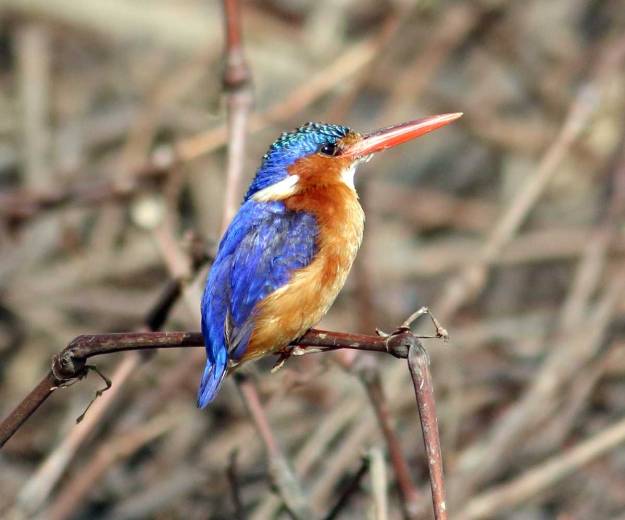
Malachite Kingfisher
Christeen Grant of Sitamani
Scattered bones and new life in August. Is anyone else missing the gusty winds usually prevalent during August?
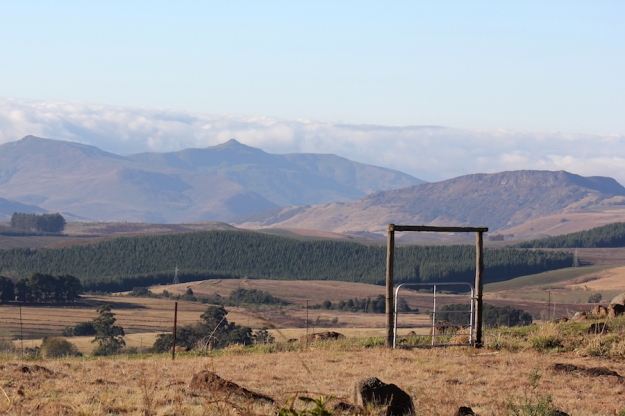
We experienced mainly mild temperatures, apart from a couple of cold fronts that brought in some wonderful rain, between there were clear blue skies, spectacular sunrises and new green grass started covering the hillsides.
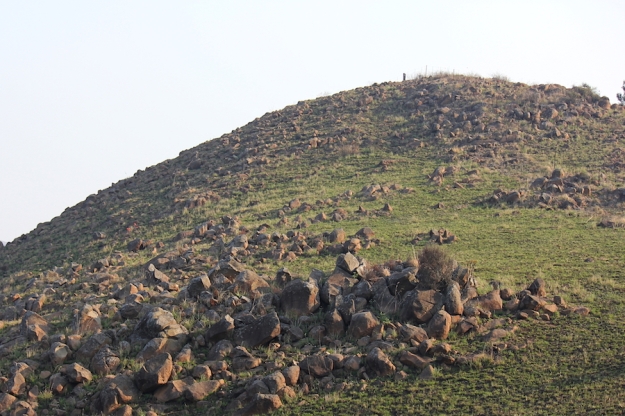
After the rain new life in popped up almost overnight. Dried out Moss, Selaginella dregei, greened up;

Selaginella dregei
Bracken Pteridium aquilinum and Tree Fern Cyathea dregei fronds started unfurling.
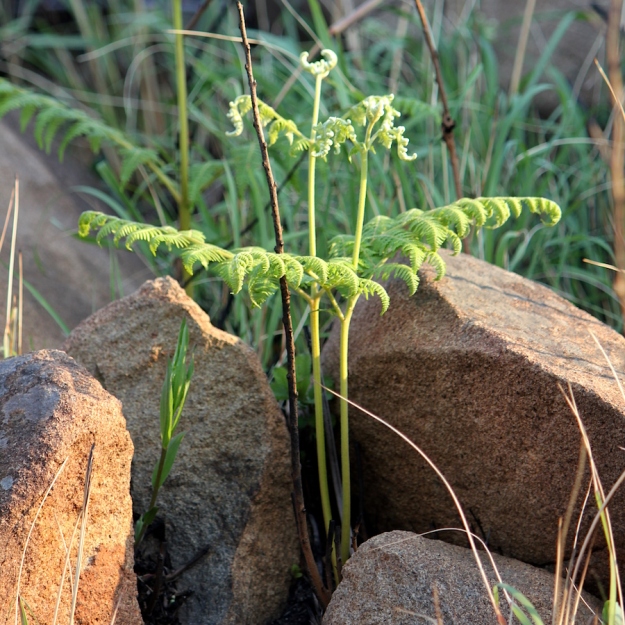
Pteridium aquilinum
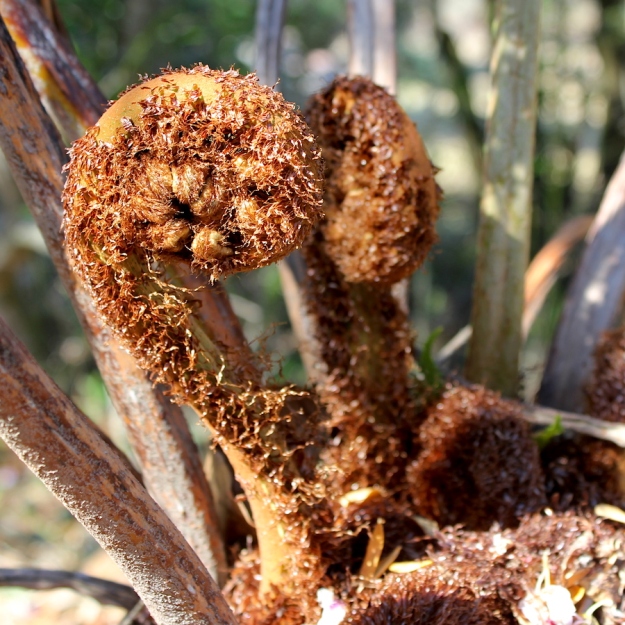
Cyathea dregei
Colourful spots appeared in the new grass, Apodolirion buchananii one of my favourite first spring flowers,
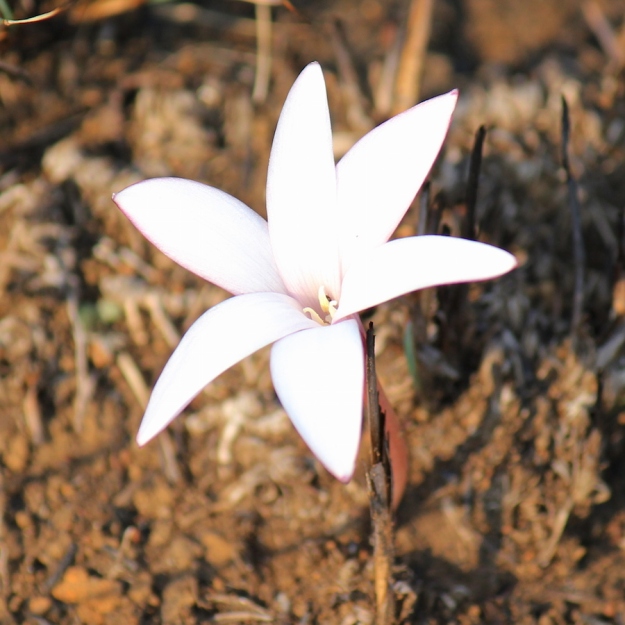
Apodolirion buchananii
Dimorphotheca jucunda, Graderia scabra, Green-tipped Fire Lily, Cyrtanthus tuckii vibrantly red, Ledebouria ovatifolia, Nemesia caerulea and Ursinia tenuiloba.

Dimorphotheca jacunda
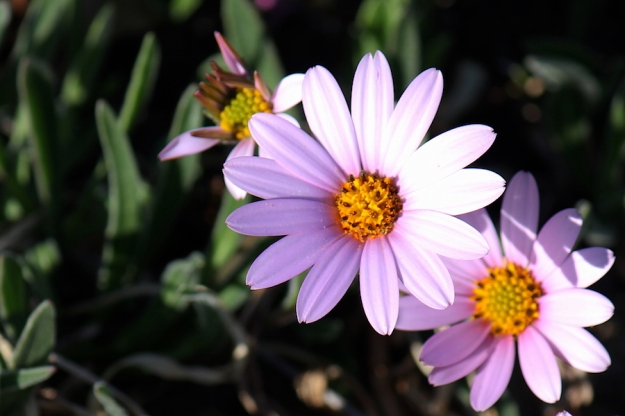
Dimorphotheca jacunda
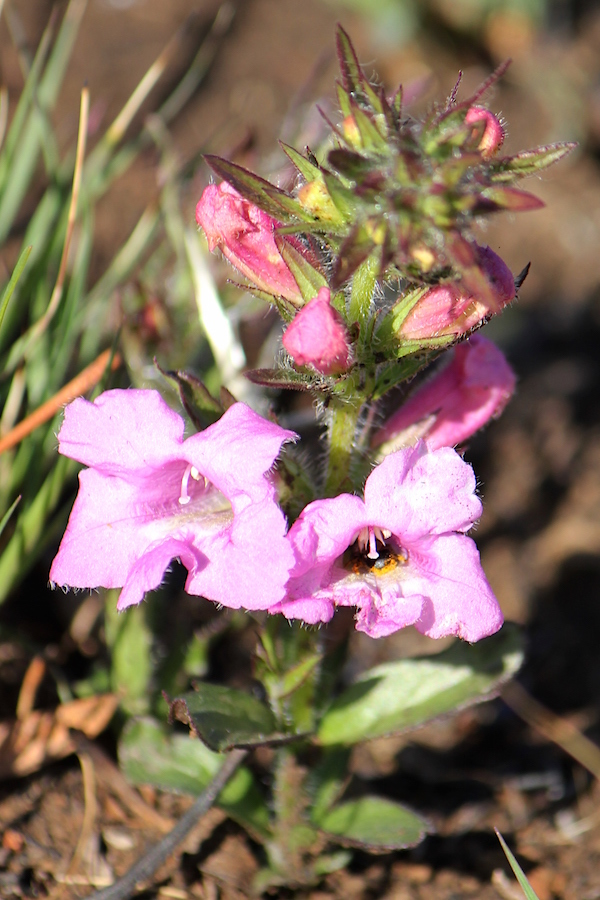
Graderia scabra

Cyrtanthus tuckii
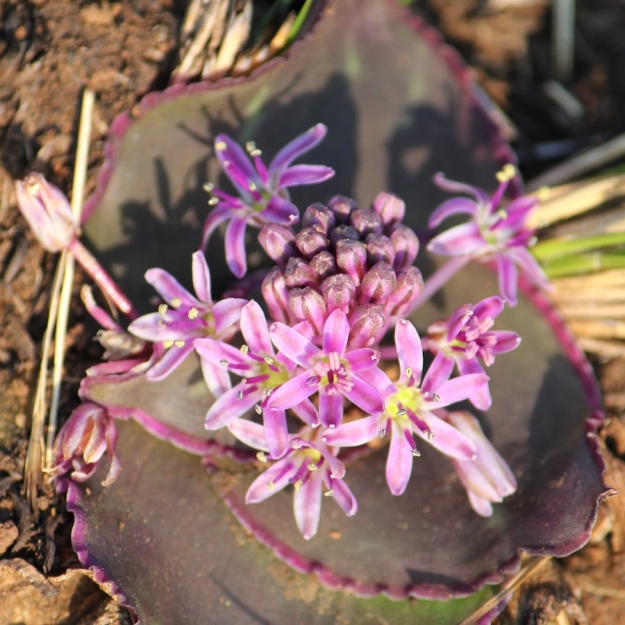
Ledebouria ovatifolia
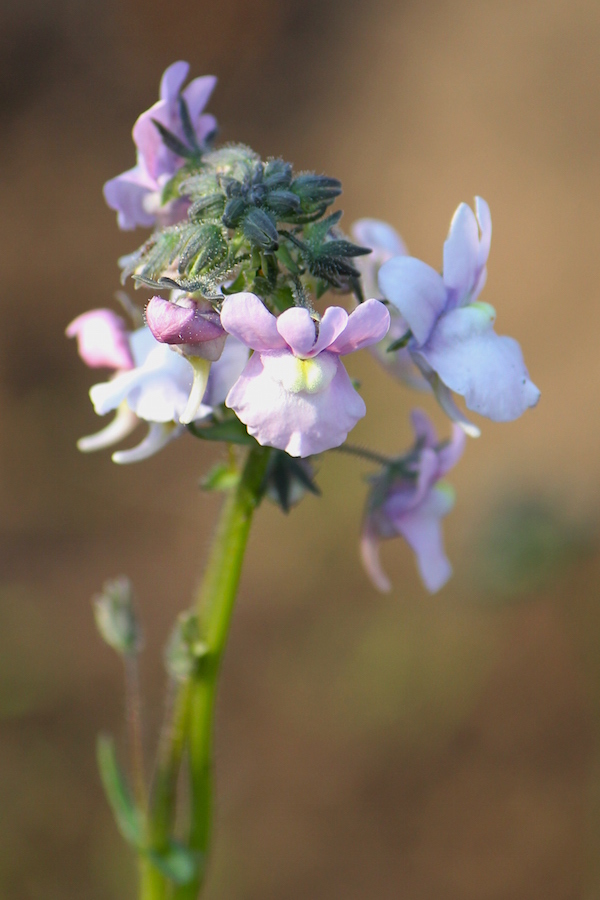
Nemesia caerulea
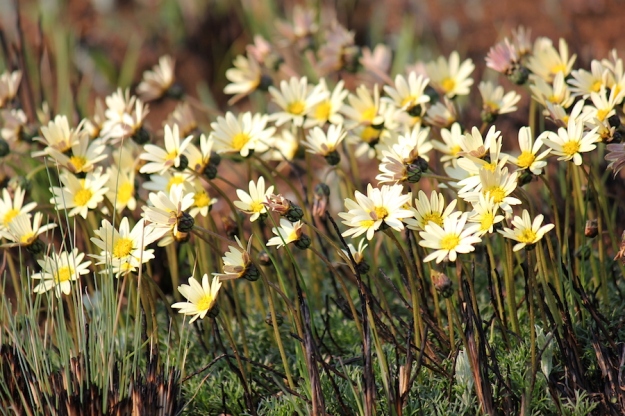
Ursinia tenuiloba
A few dried out seed heads of Themeda triandra interspersed in unburnt areas.
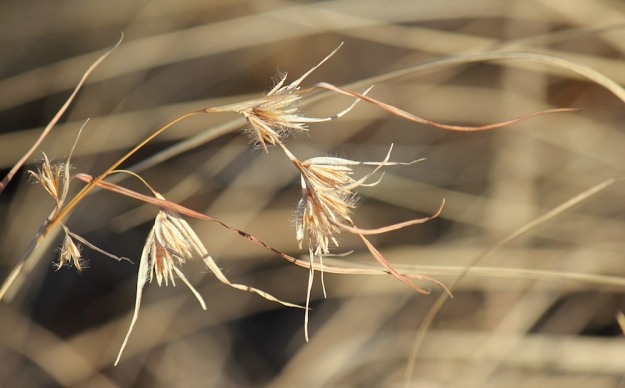
Themeda triandra
Masses of Buddleja salviifolia flowers scent the air,
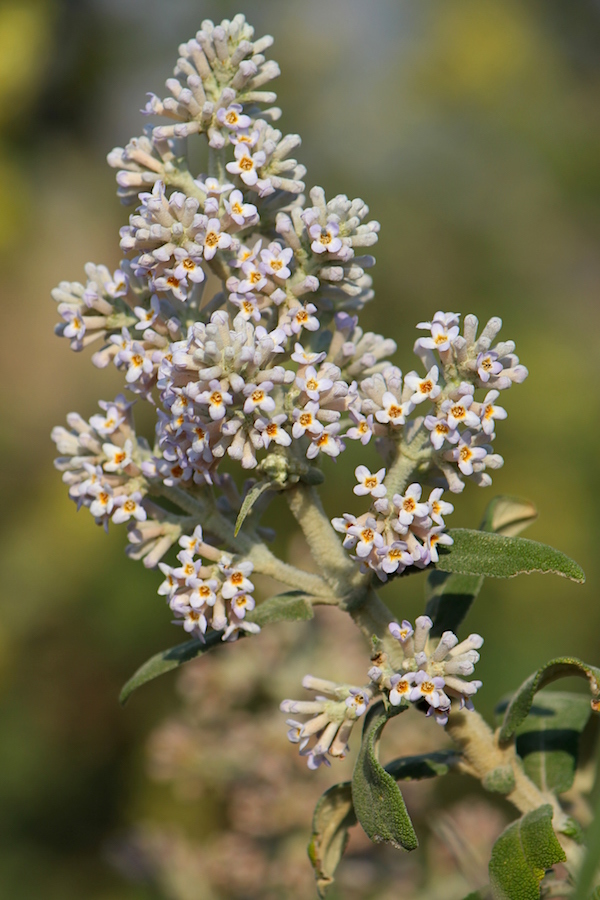
Buddleja salviifolia
new leaves of the Cabbage Trees, Cussonia paniculata wave like a feather dusters on long trunks
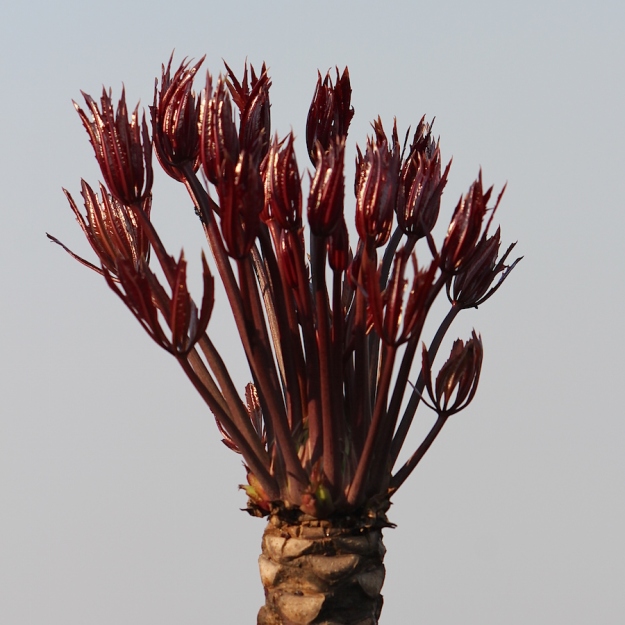
Cussonia paniculata
and the delicate yellow Ouhout, Leucosidea sericea flowers are attracting hover flies, bees and birds.
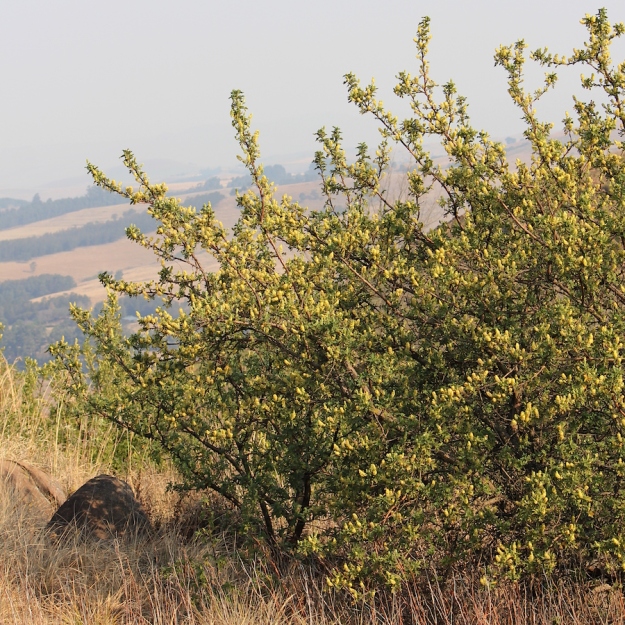
Leucosidea sericea
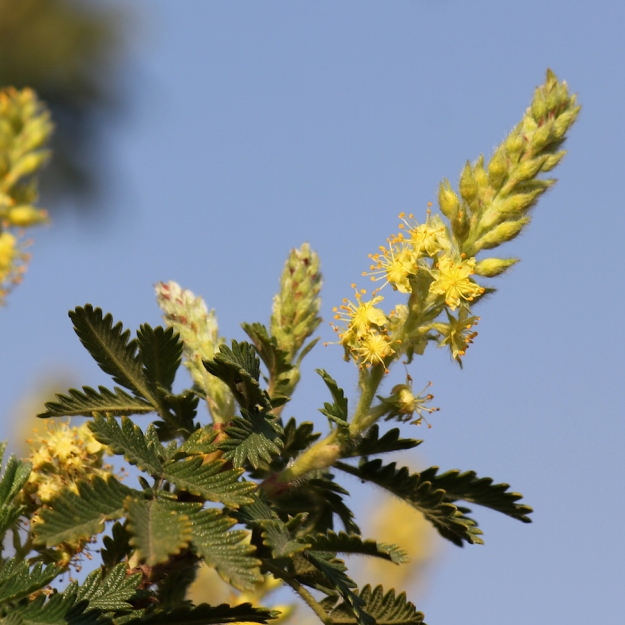
Leucosidea sericea
I found a few huge Field Mushrooms, Agaricus campestris after the rain.
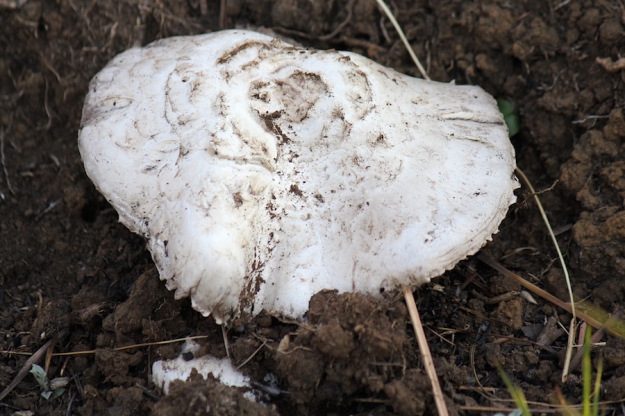
Agaricus campestris
Revealed in burnt off areas were two sets of scattered bones. I think the skull is of a Porcupine and the other set was a small antelope, probably a Duiker. As there seemed to be little disturbance of the bones I think they died of natural causes.
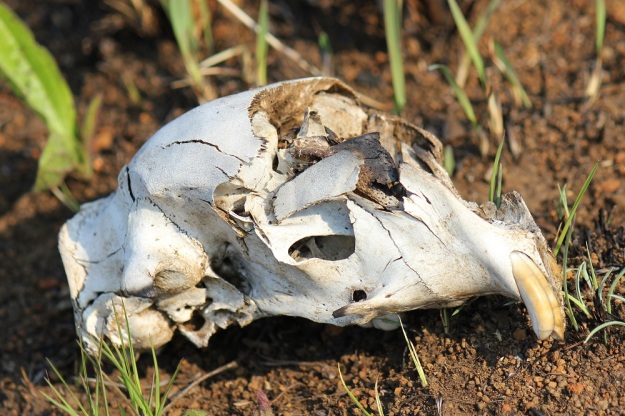
Porcupine skull
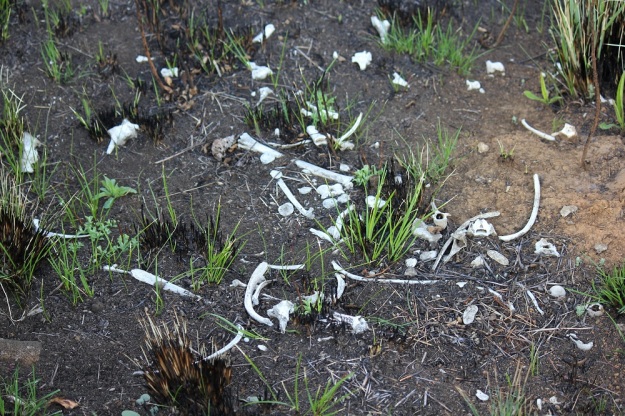
Remains possibly of a Duiker
The Common Reedbuck are still keeping close to the house and one evening a female and male casually picked their way grazing as they moved.
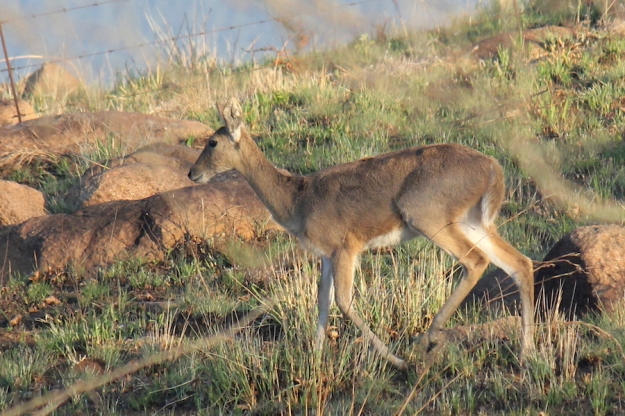
Common Reedbuck (female)
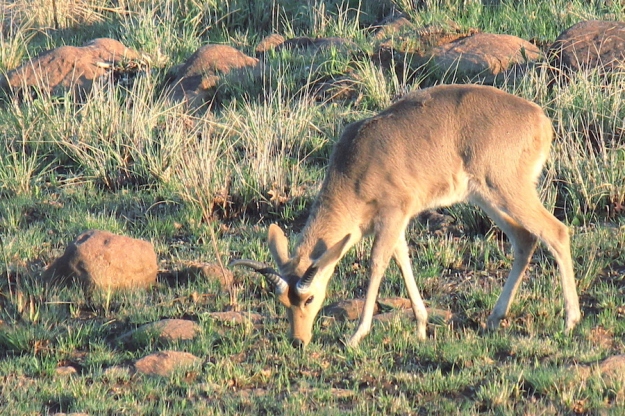
Common Reedbuck (male)
An exciting find was a pile of what I’m sure was relatively fresh Eland droppings.
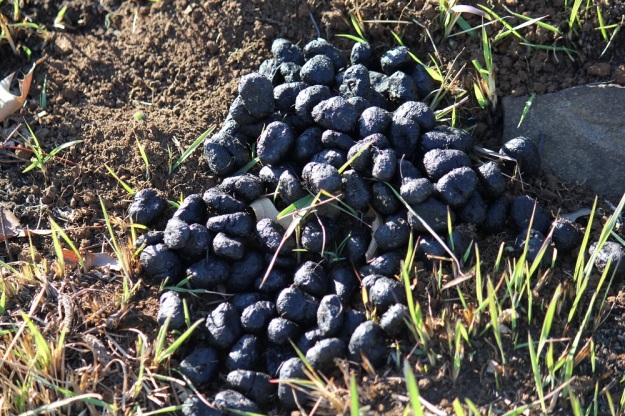
Eland droppings
The Village Weavers are back at the Pin Oak in the garden and one male was very busy starting to build a nest. Black-headed Orioles, Black-backed Puffbacks, Cape Robin-chats, Fork-tailed Drongos, Cape White-eyes, Speckled Pigeons and Southern Boubous are some of the birds I’ve seen round the house and at the birdbaths. The Fish Eagle I hear regularly calling from the valley.
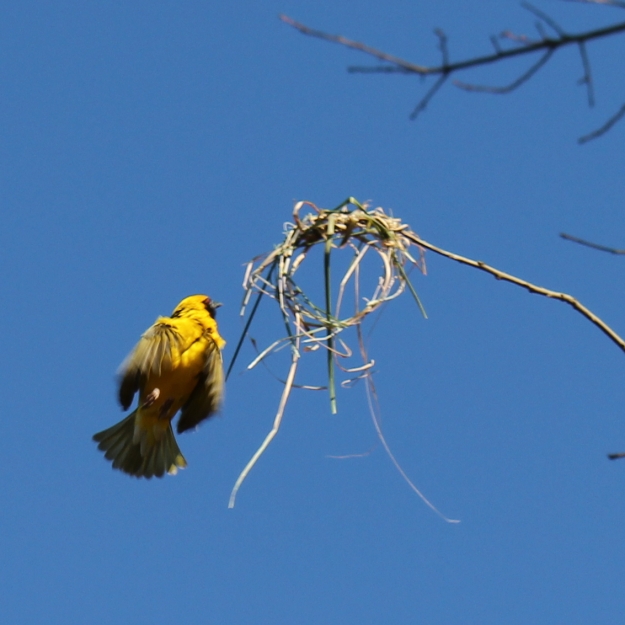
Male Village Weaver building a nest
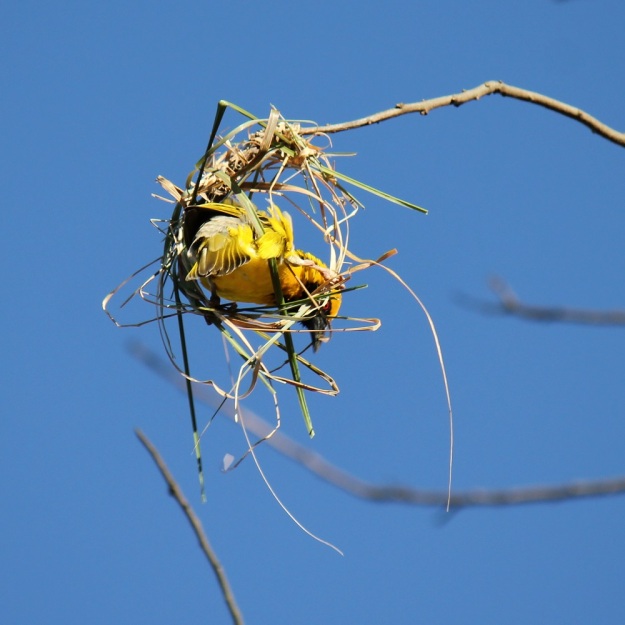
Male Village Weaver building a nest
On my way home one day I spotted a tiny, ±2mm Crab spider, Family Thomisidae on the road. Unusual for me as I’d never seen a black one before, the ones I normally see are yellow, green or pink.
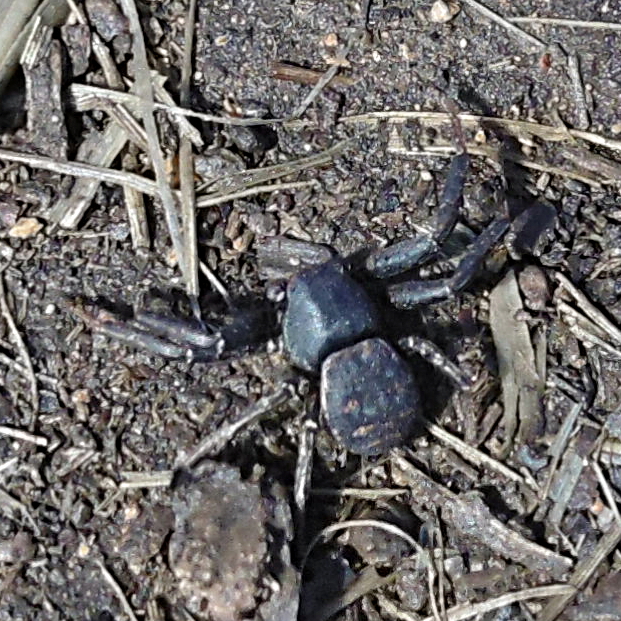
Crab Spider
On Mt. Shannon, Mondi Plantation, Philip came across a very weak Long-crested Eagle on the ground, it had a ring on one leg. On investigation he discovered that it had been ringed by Lindy Jane Thompson, as an adult bird, on the 25th March 2015, on the Boston-Dargle Road. When he returned it had gone, leaving no trace.
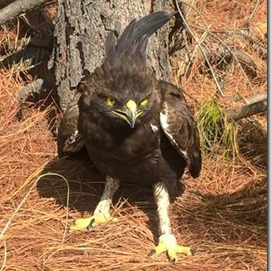
Long-crested Eagle
On another day we saw a pair of South African Shelducks, Yellow-billed Ducks and a Reed Cormorant on the dam as we walked past.
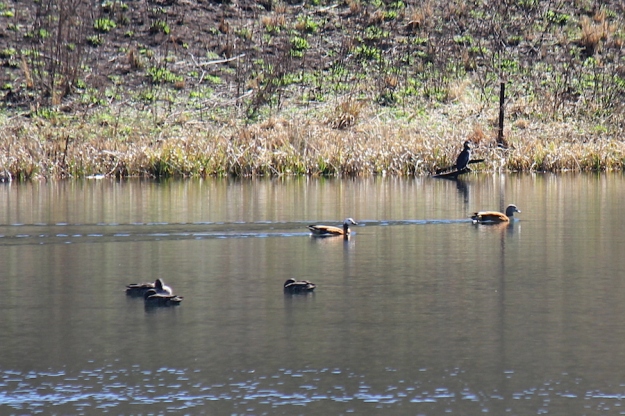
Three Yellow-billed ducks in the foreground, two South African Shelduck in the middle (male and female), and a Reed Cormorant in the background.










